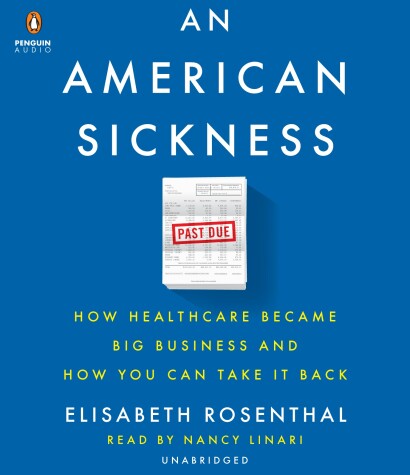
dpfaef
Written on Dec 3, 2017
Overall, CMS projected that total health care spending for 2016 reached nearly $3.4 trillion, up 4.8 percent from 2015. According to CMS, U.S. health care spending is projected to reach nearly $5.5 trillion by 2025. The agency attributed the increase in large part to the United States' aging population and rising prices for health care services.
According to the report, national health care spending is projected to outpace growth in the United States' Gross Domestic Product (GDP) by 1.2 percentage points. As a result, CMS estimated that health care spending will account for 19.9 percent of GDP by 2025, up from 17.8 percent in 2015.[1. CMS: US health care spending to reach nearly 20% of GDP by 2025 ]
Rosenthal lists of 10 Economic Rules that she sees govern the Dysfunctional U.S. Medical Market.
- More treatment is always better. Default to the most expensive option.
- A lifetime of treatment is preferable to a cure.
- Amenities and marketing matter more than good care.
- As technologies age, prices can rise rather than fall.
- There is no free choice. Patients are stuck. And they’re stuck buying American.
- More competitors vying for business doesn’t mean better prices; it can drive prices up, not down.
- Economies of scale don’t translate to lower prices.
- There is no such thing as a fixed price for a procedure or test. And the uninsured pay the highest prices of all.
- There are no standards for billing. There’s money to be made in billing for anything and everything.
- Prices will rise to whatever the market will bear. The mother of all rules!
Through out the book she refers to these rules, as she educates on out of network fees, facility fees, old drugs that become exorbitantly expensive for no other reason than profit. Tests, Electronic Medical Records, pharmaceuticals, billing codes have all become a way to ease more money out of us with not relate improvement in medical care.
The book is overwhelming in its look at the current medical system in the United States, the Republicans want to cut back on both private and government insurances, telling us that we need to shop around for the best price (which isn't always possible) and totally impractical with the current system. While health care might be more readily available in say Marin County, California health care may be very limited in say Bonner's County, Idaho.
It is a fascinating book, for me it made it all the more clear that a single payer system would be best. That getting sick in this country is scary, I don't really see the suggestions for taking back our medical system working out any time in the near future. I do not trust politicians to be doing what is best for patients, business interests will always come first. Despite what Raul Ryan keeps telling us Medicare is not going broke today or tomorrow and there are methods to fix it.
This review was originally posted on The Pfaeffle Journal
